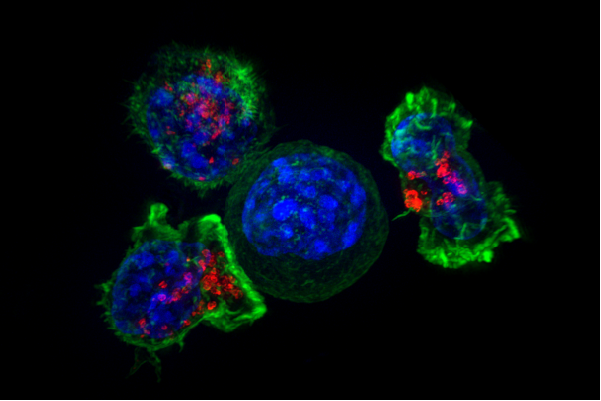
Patients with advanced non-small cell lung cancer (NSCLC) and the MET exon 14 (METex14) skipping mutation had a 46.5% objective response rate to the targeted therapy drug tepotinib, as shown in a study published today in the New England Journal of Medicine and presented at the 2020 American Society of Clinical Oncology (ASCO) Annual Meeting ASCO20 Virtual Meeting (Abstract 9556—Poster 322) by researchers from The University of Texas MD Anderson Cancer Center.
“The success of this trial, alongside other studies on the same class of drugs, establishes MET exon 14 as an actionable target for non-small cell lung cancer,” said senior author Xiuning Le, M.D., Ph.D., assistant professor of Thoracic/Head & Neck Medical Oncology. “We’re pleased to show that another group of lung cancer patients may benefit from precision medicine.”
METex14 skipping is a mutation that drives cancer growth and occurs in 3-4% of all NSCLC patients. Patients with METex14 skipping tend to be older, with a median age of 74, and typically don’t have other actionable mutations with existing targeted therapy options.
The study results represent cohort A of the single-arm, international Phase II VISION trial, which is ongoing with additional cohorts. More than 6,700 NSCLC patients were prescreened for MET alterations through liquid and/or tissue biopsy. A total of 152 patients with advanced NSCLC and METex14 skipping were treated with tepotinib. Patients with prior treatment and/or stable brain metastasis were allowed to participate in the trial. Participants were treated with 500mg daily oral tepotinib.
Meaningful benefit for an elderly population
The primary endpoint was objective response rate, defined as complete or partial response, according to the RECIST v1.1 criteria and confirmed by independent review. After nine months follow-up, the primary efficacy population of 99 patients had a 46.5% objective response rate and durable response of 11.1 months.
“The median duration of response of almost one year is very meaningful for this patient population,” Le said. “It’s important for these elderly patients to have another treatment option, other than traditional chemotherapy, in oral form that can improve their quality of life for a long duration.”
Toxicities were manageable, with grade-3 treatment-related adverse events reported in 27.6% of patients. The most common side effect was peripheral edema. Eleven percent of patients discontinued treatment due to adverse events.
The study also collected patient-reported outcomes, which indicated an improvement in coughing and overall maintenance of quality of life.
Liquid biopsy for biomarker detection
The VISION study represents the largest METex14 skipping cohort to be identified prospectively through liquid biopsy, verifying that liquid biopsy is a reliable method to detect the mutation. The study also showed that liquid biopsy was a useful tool to identify response to the drug.
Matched liquid biopsy samples for baseline and on-treatment were available for 51 patients. Next-generation sequencing found 34 of those patients had a molecular response with a complete or deep reduction of the mutation, and radiographic response was confirmed in 68% of patients who had a molecular response.
“This study marked a major advance in that we now have a highly effective, oral therapy for a group of non-small lung cancer patients that previously did not have any targeted therapy options,” said co-author John Heymach, M.D., Ph.D., chair of Thoracic-Head & Neck Medical Oncology. “We are proud to lead the field forward as we work to provide novel treatments to patients.”
Source: Read Full Article
